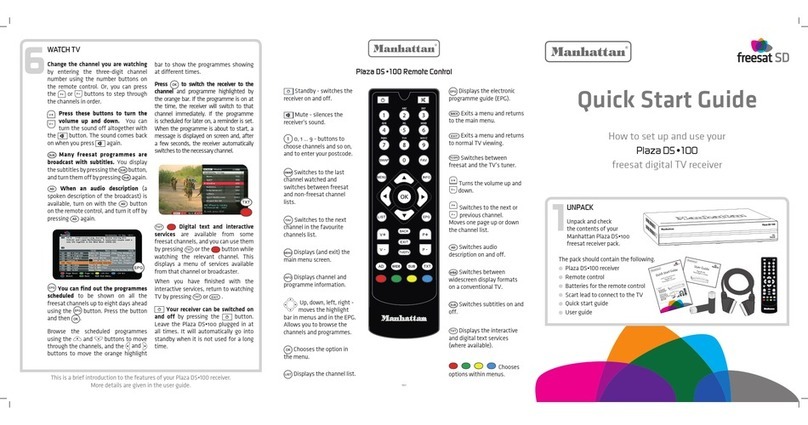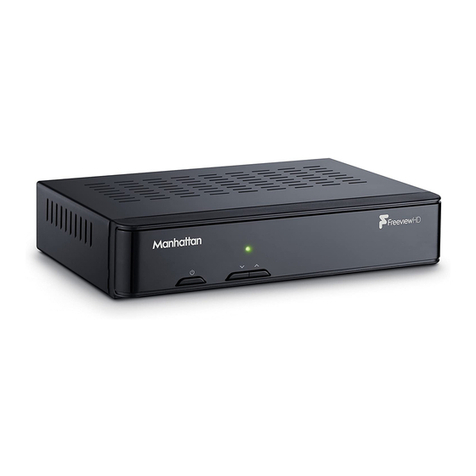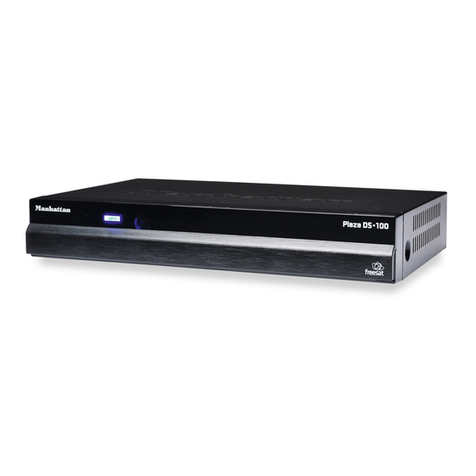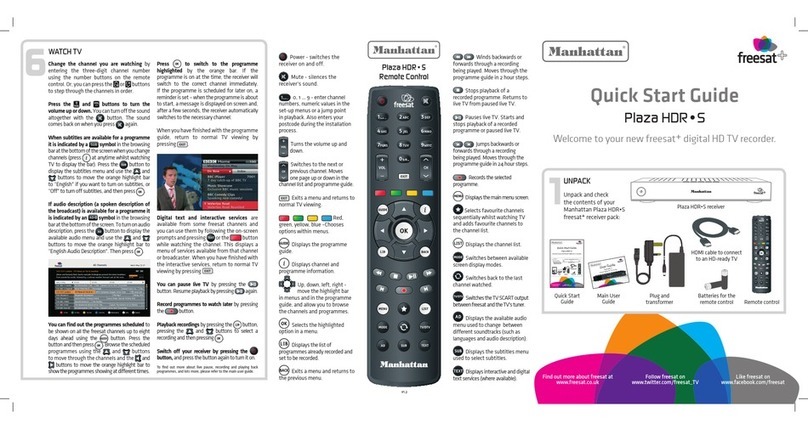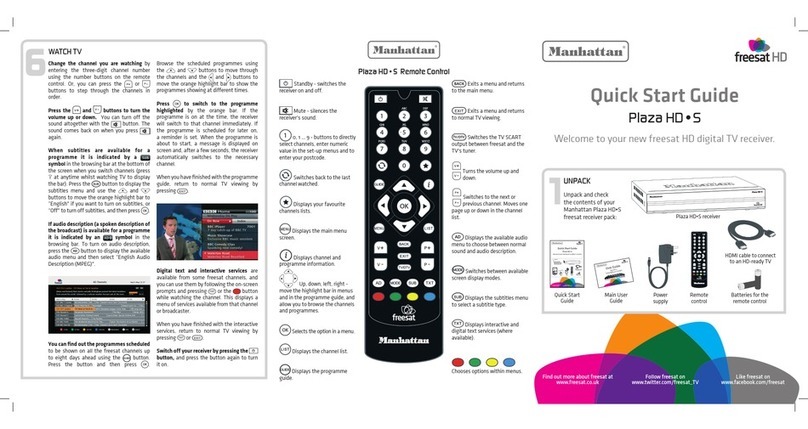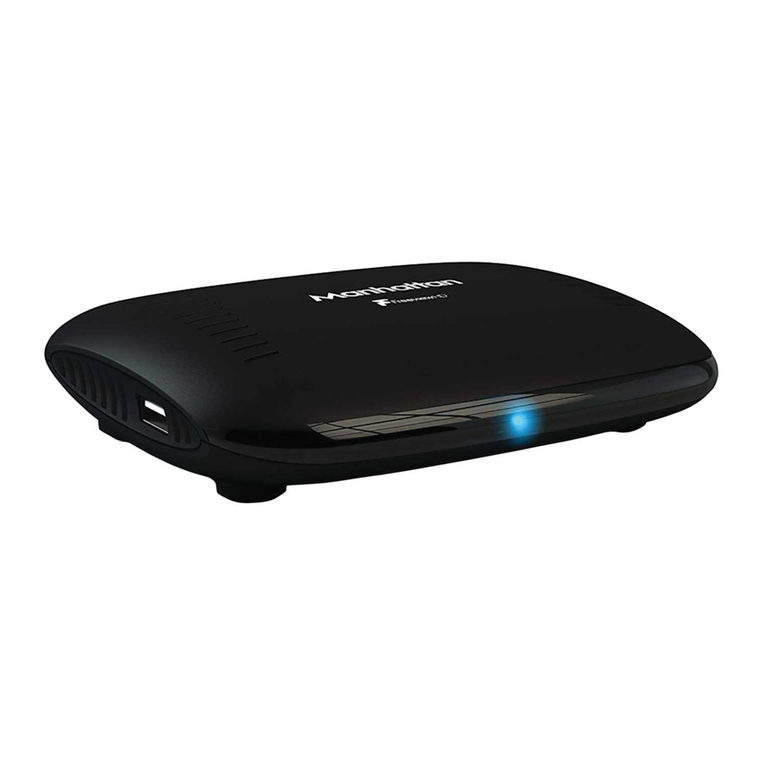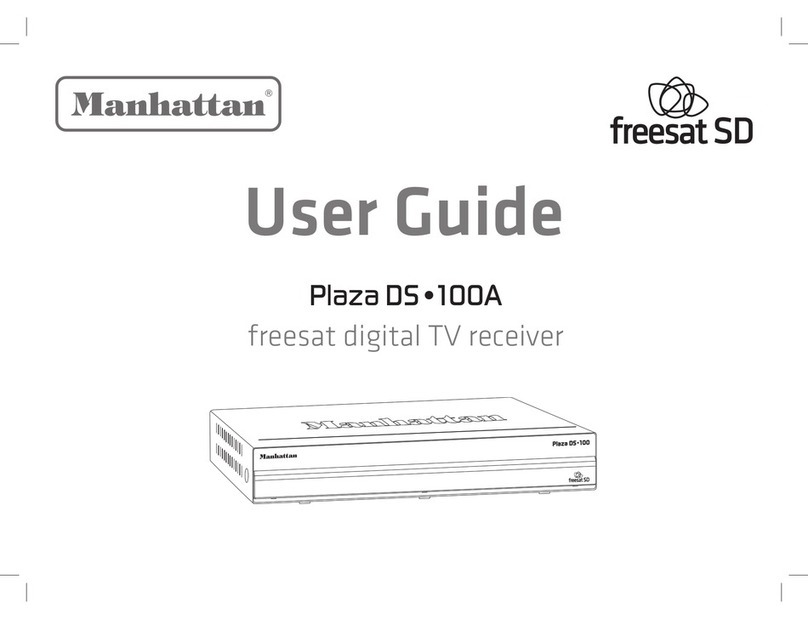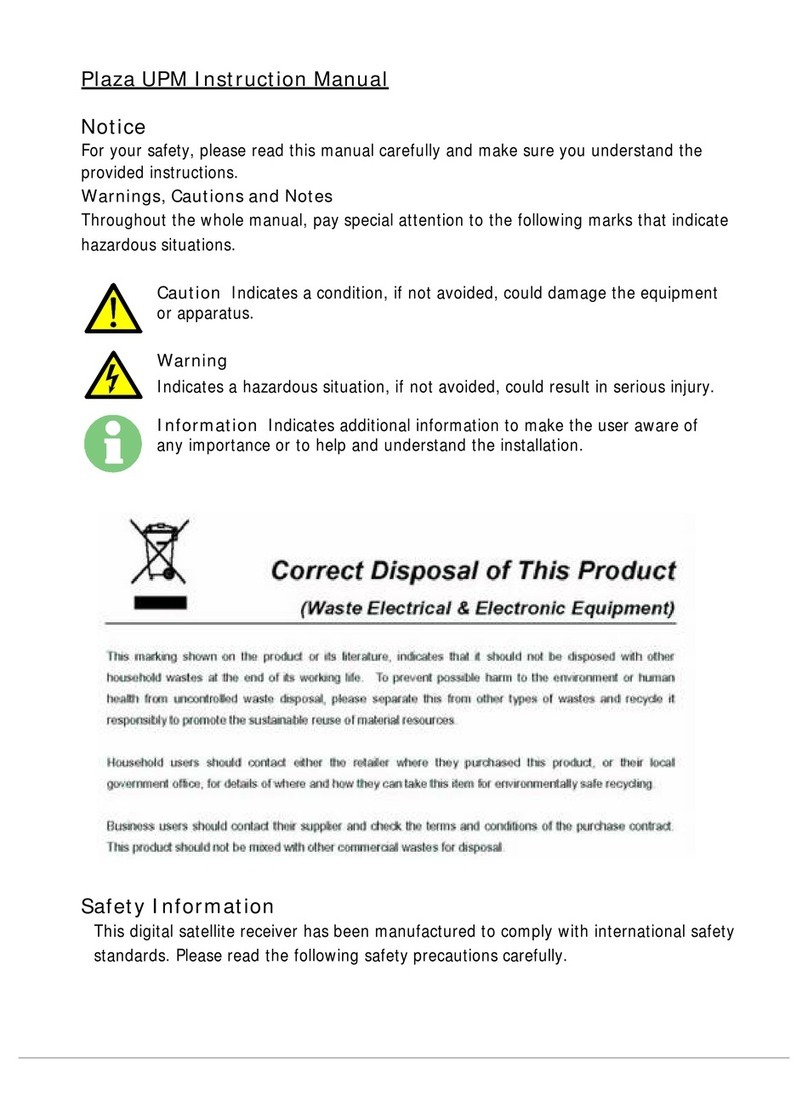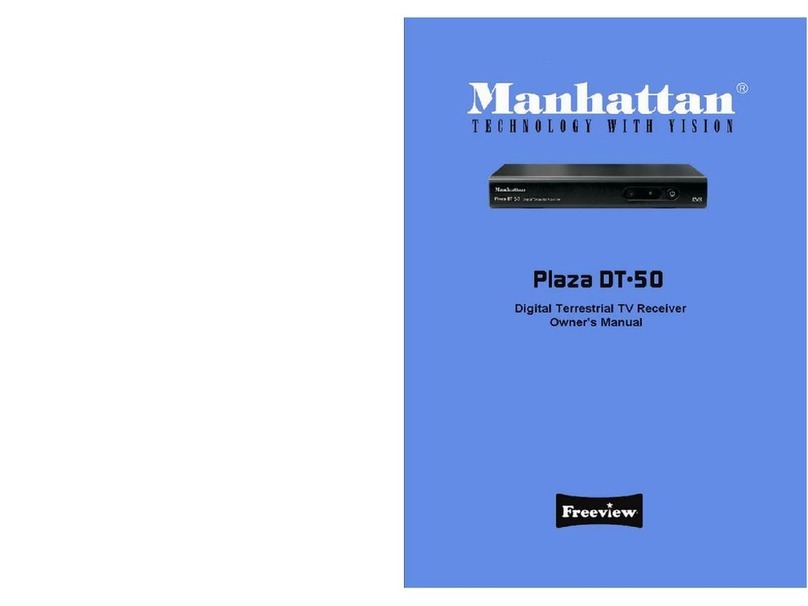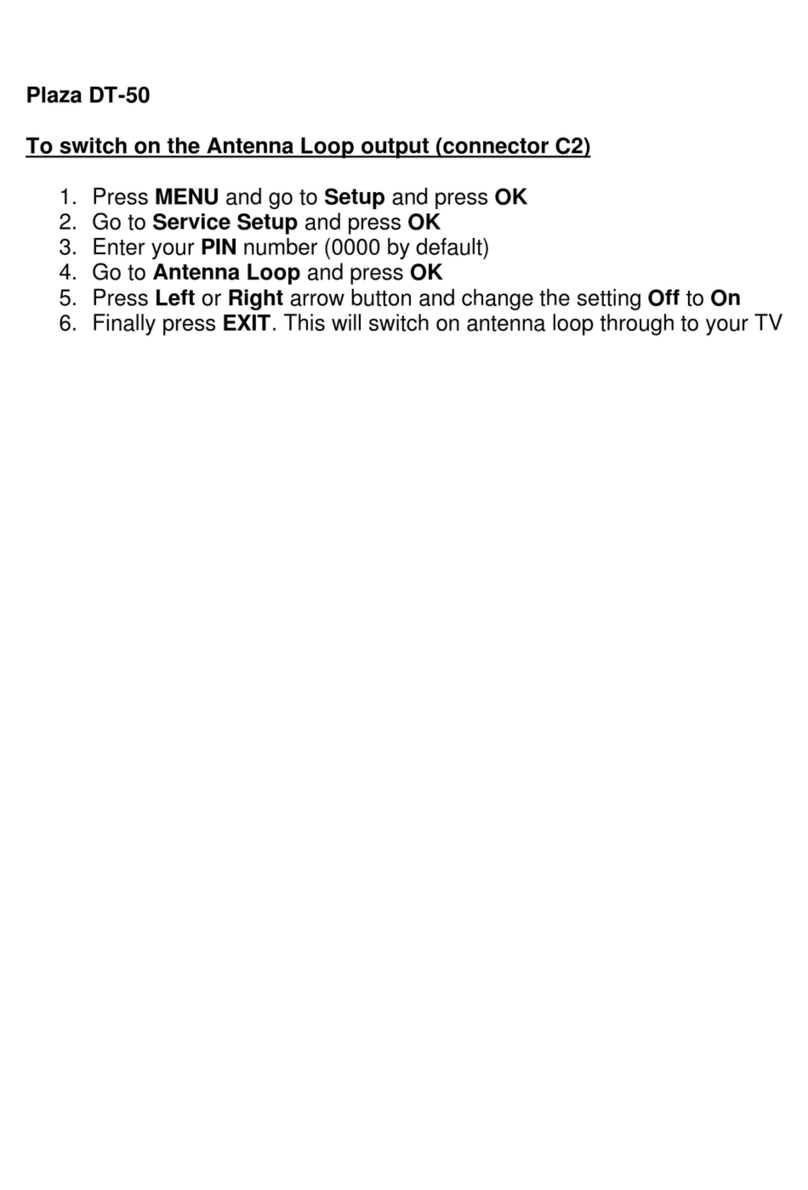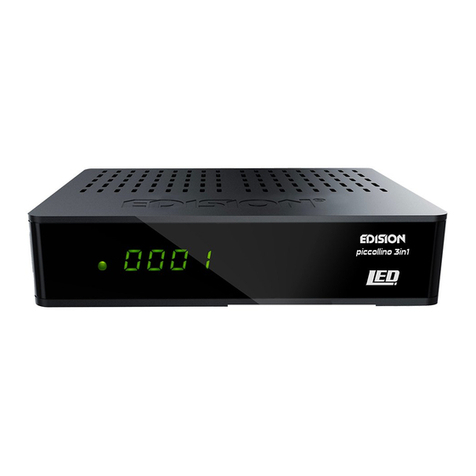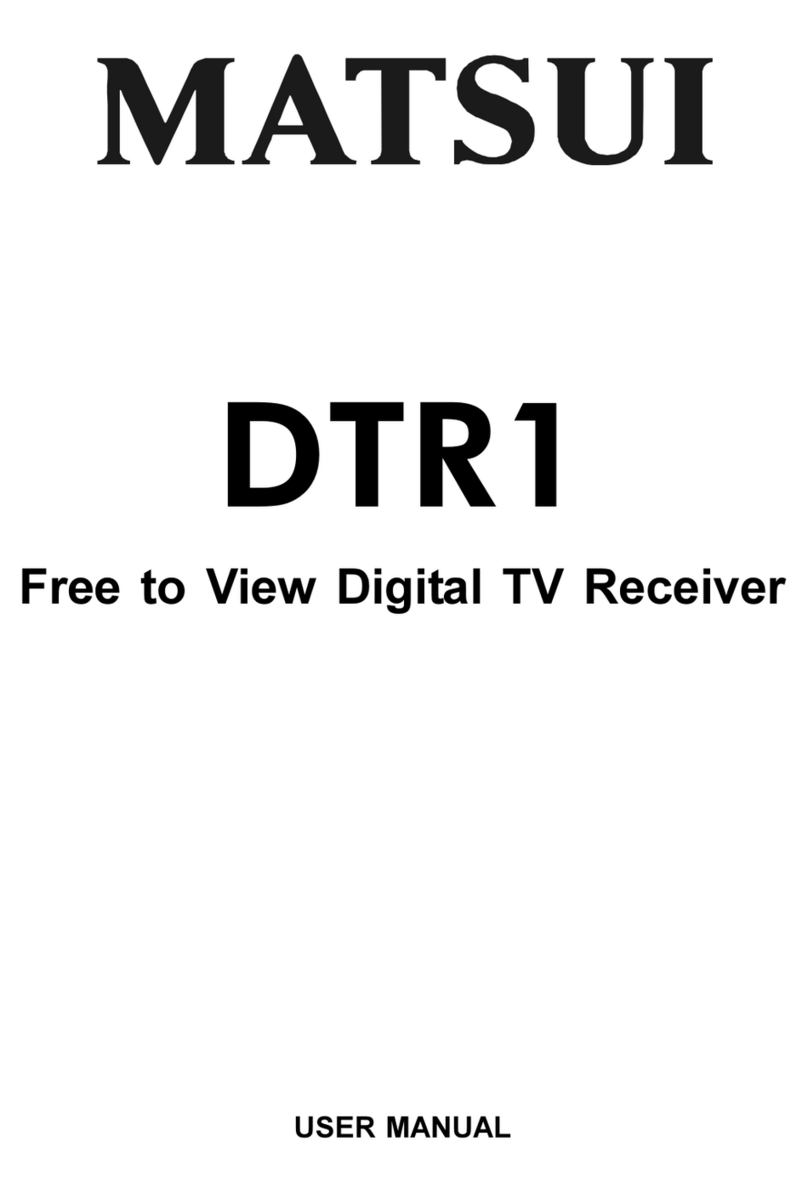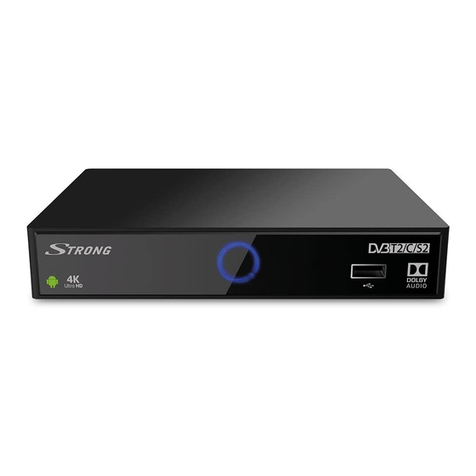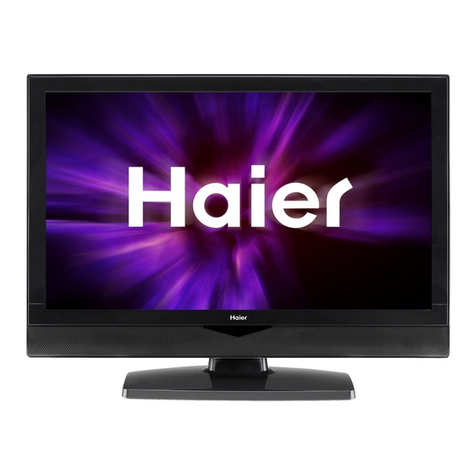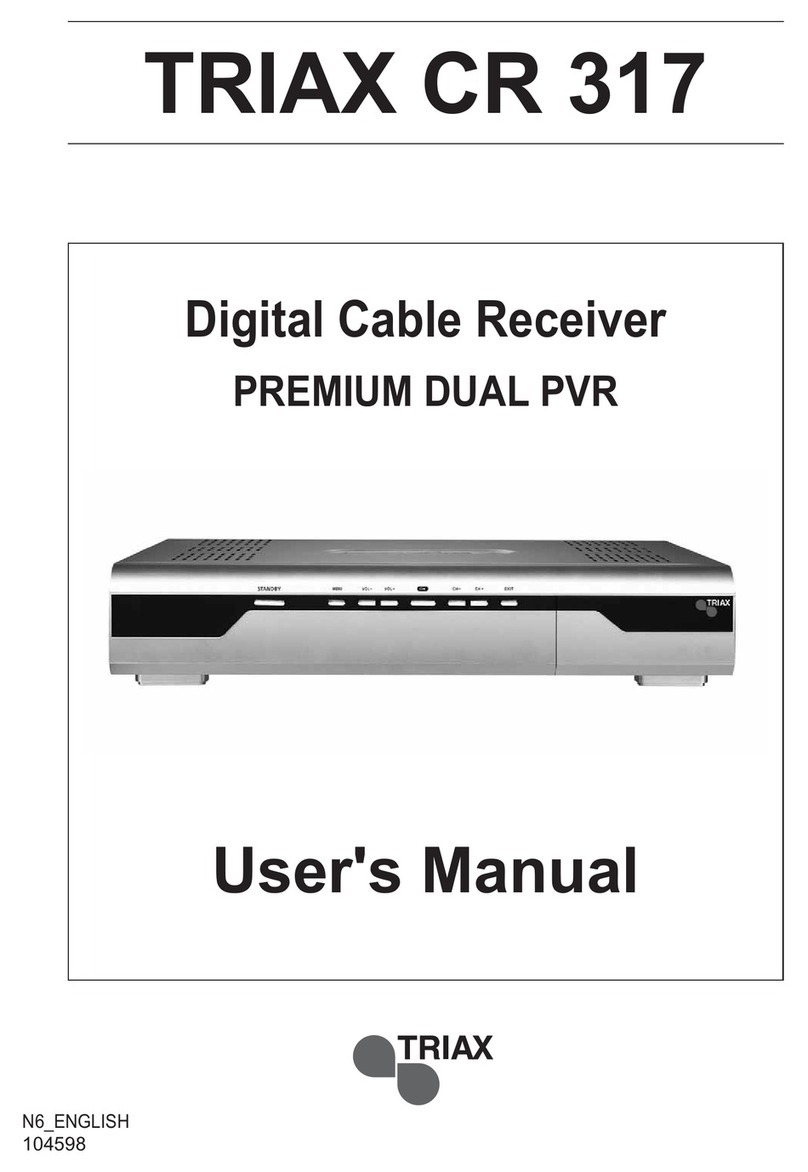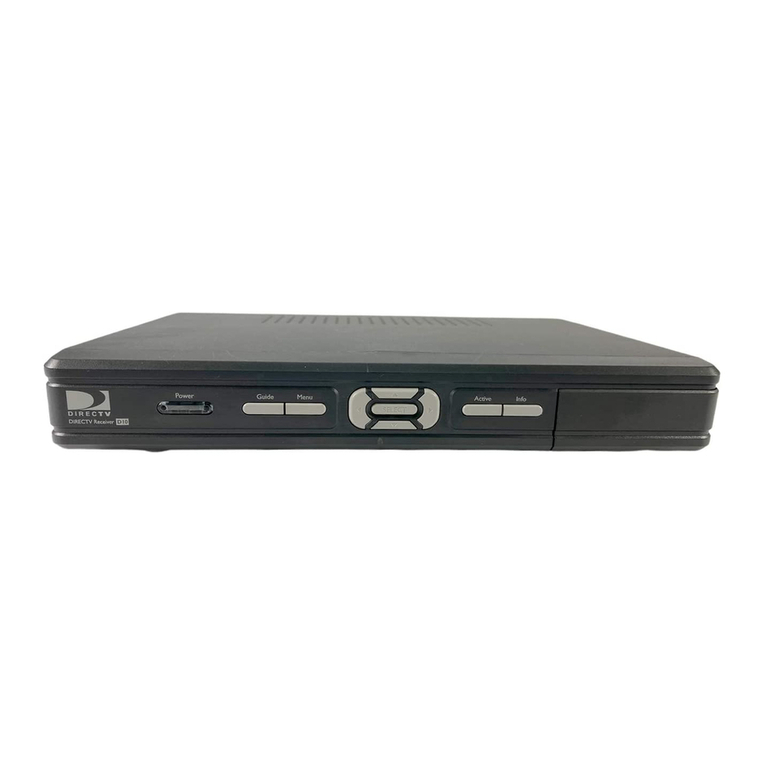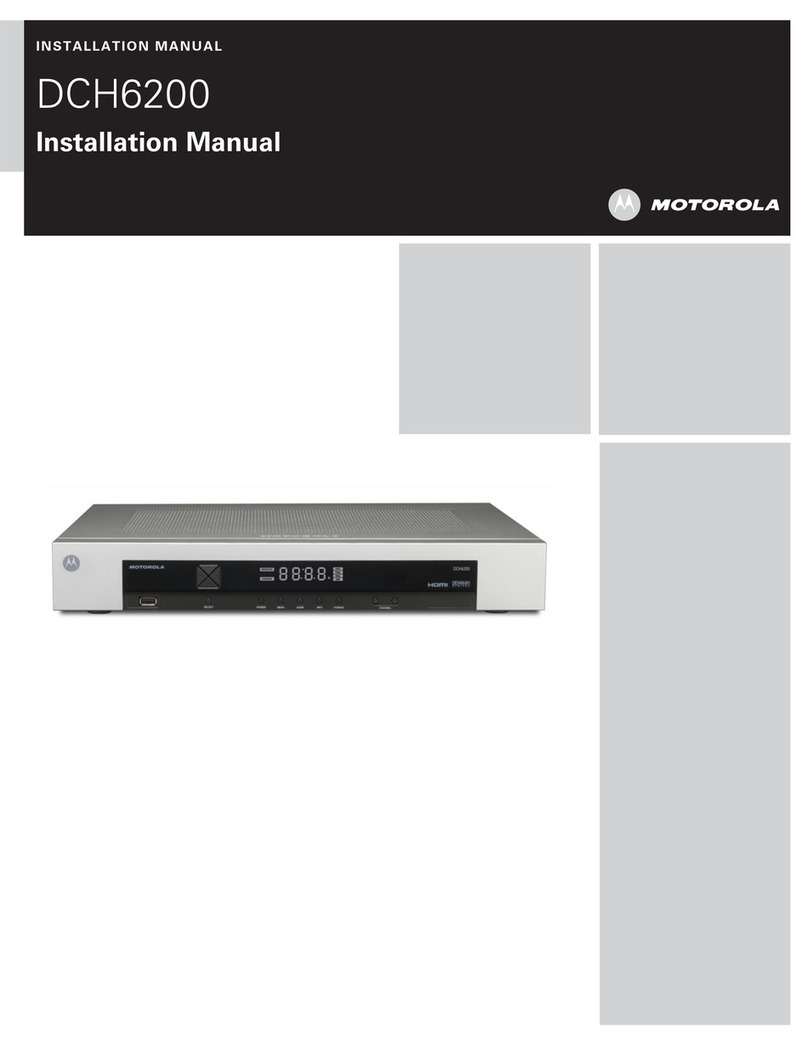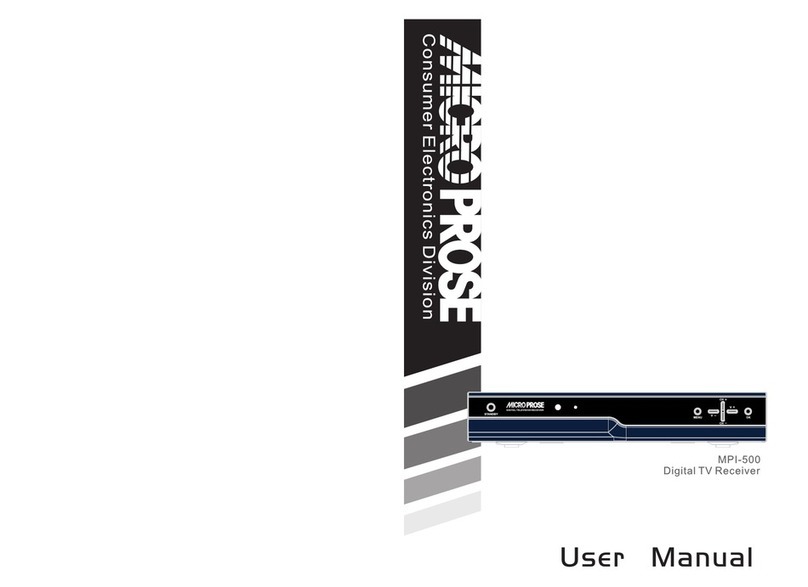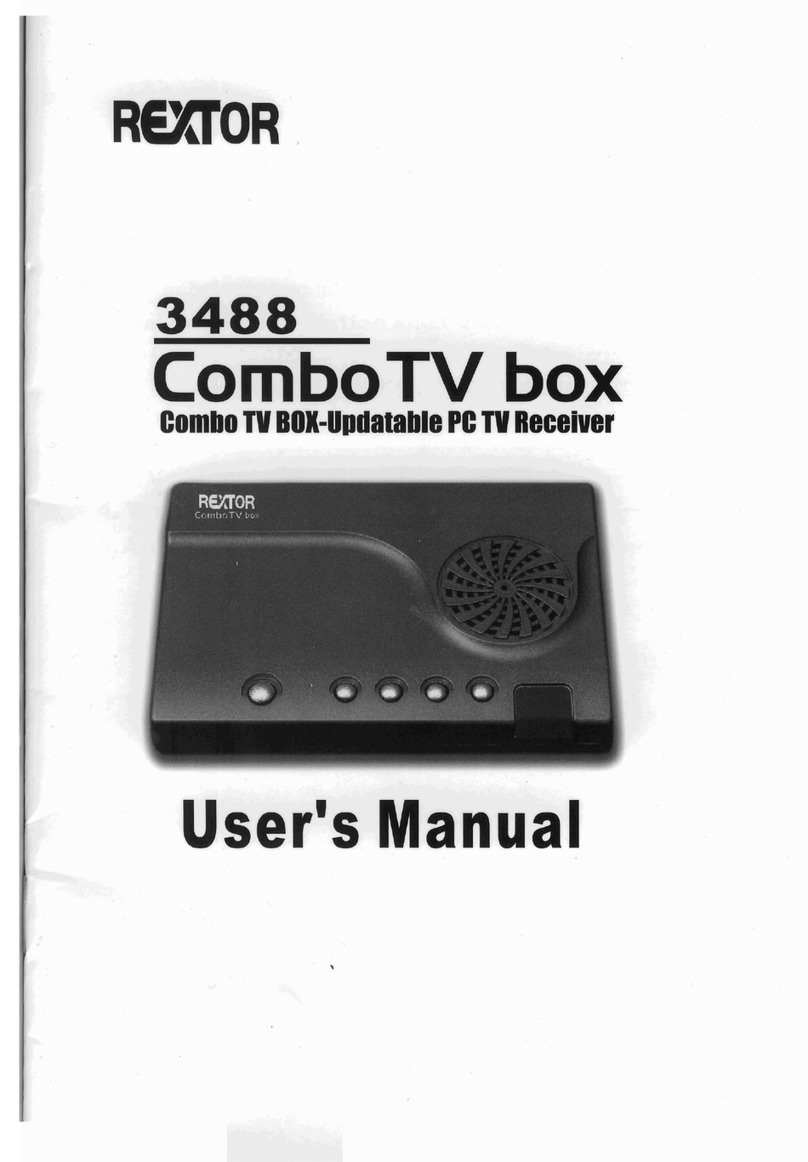11
IMPORTANT! If you experience a problem with the digital terrestrial reception, it is
necessary to define as clearly as possible the symptom of the occurring problem.
In the table below, you will find various solutions for problems you may come across.
Symptom Possible Cause Solution (to try)
You receive analogue
channels without a
problem, but not the
digital channels.
Antenna is pointing to an
analogue only transmitter.
Digital channels may be on a
different transmitter.
Adjust the orientation of
your antenna see
Wedging / adjusting the
antenna
You receive analogue
channels but not the
digital channels. You live
in a flat
The installation of collective
antenna is not adapted to
terrestrial digital
Contact the flat owner or
the residence union
You receive analogue
channels without a
problem, but not the
digital channels.
Your area is not covered by
the digital terrestrial yet. There is no immediate
solution.
Some channels are not
received at all. The
channels you are receiving
do not have adequate
signal and quality levels.
The picture on analogue
channels is not clear.
You are located far away
from the transmitter. 1.Try an indoor amplifier
2.Try a mast amplifier
3.Try a high gain antenna.
channels but the reception
is disrupted at times (i.e.
when another electrical
product is switched on).
You are experiencing
electrical interference. 1. Replace the antenna
cable with a screened
cable.
2. Replace the accessories
(splitters etc) with
screened type.
You are receiving some
networks but others are
disrupted or not received
at all.
You are experiencing echoes. 1. Slightly adjust the
antenna.
2. Replace the antenna
with Anti-Echoe Screens.
You receive some
networks but others above
channel 60 are disrupted
or not received at all.
Your antenna has high loss
for the upper UHF band. You need a more powerful
antenna for the whole UHF
band.
You receive networks
between 21 and 35 but
none of those between 36
and 39.
Your antenna only receives
one part of the UHF band You need a more powerful
antenna for the whole UHF
band.
Your reception is fine most
of the time but is
disrupted when it rains or
at some other random
moments.
You are on the limit of the
transmitters coverage area. You need a more powerful
antenna.
What is a disrupted reception in digital?
In digital reception, a disrupted reception results in frozen picture (partially or totally) or
the appearance of mosaic effect. The sound may disappear for a while, or strange effect
can be heard. The consequences are totally different from the consequence in analogue
(snow effect).
12
What about indoor reception?
The transmission parameters are not optimised for indoor reception. As a consequence,
even though it is possible to receiver Freeview channels with an indoor antenna, it is not
guaranteed. Coverage areas are defined for a roof-aerial. Indoor reception is only
possible at a short distance from the transmitter. Electronic interference from home
appliances such as washing machines, switches etc often cause fleeting reception
problems when using indoor aerial.
GLOSSARY
Receiver: Equipment that allows you to receive digital TV, like Free To View channels.
Analogue Channels: Nature of the signals used for terrestrial television since the middle
of the 20th Century. Since digital has come along, analogue will disappear (starting
2008).
Network: Number given to a frequency band. In UHF, networks are numbered from 21
to 69.
Transmitter: Pylon that transmits digital or analogue signals, and towards which your
antenna must be pointed.
EPG: Electronic Program Guide.
FTA: Free To Air = free channels.
Digital:Nature of the signals used in modern transmissions. Digital allow you to view
more channels than analogue. Digital channels have existed for a few years on satellite
and cable. They will replace the terrestrial analogue channels. One channel (e.g. BBC1)
can be transmitted both in analogue and digital.
Polarization: Orientation of the transmitter wave. Most UHF transmissions are horizontal.
The elements of your aerial must therefore be horizontal.
Terrestrial:Refers to transmissions in the air, as opposed to cable or satellite.
MULTIPLEXES & CHANNELS
